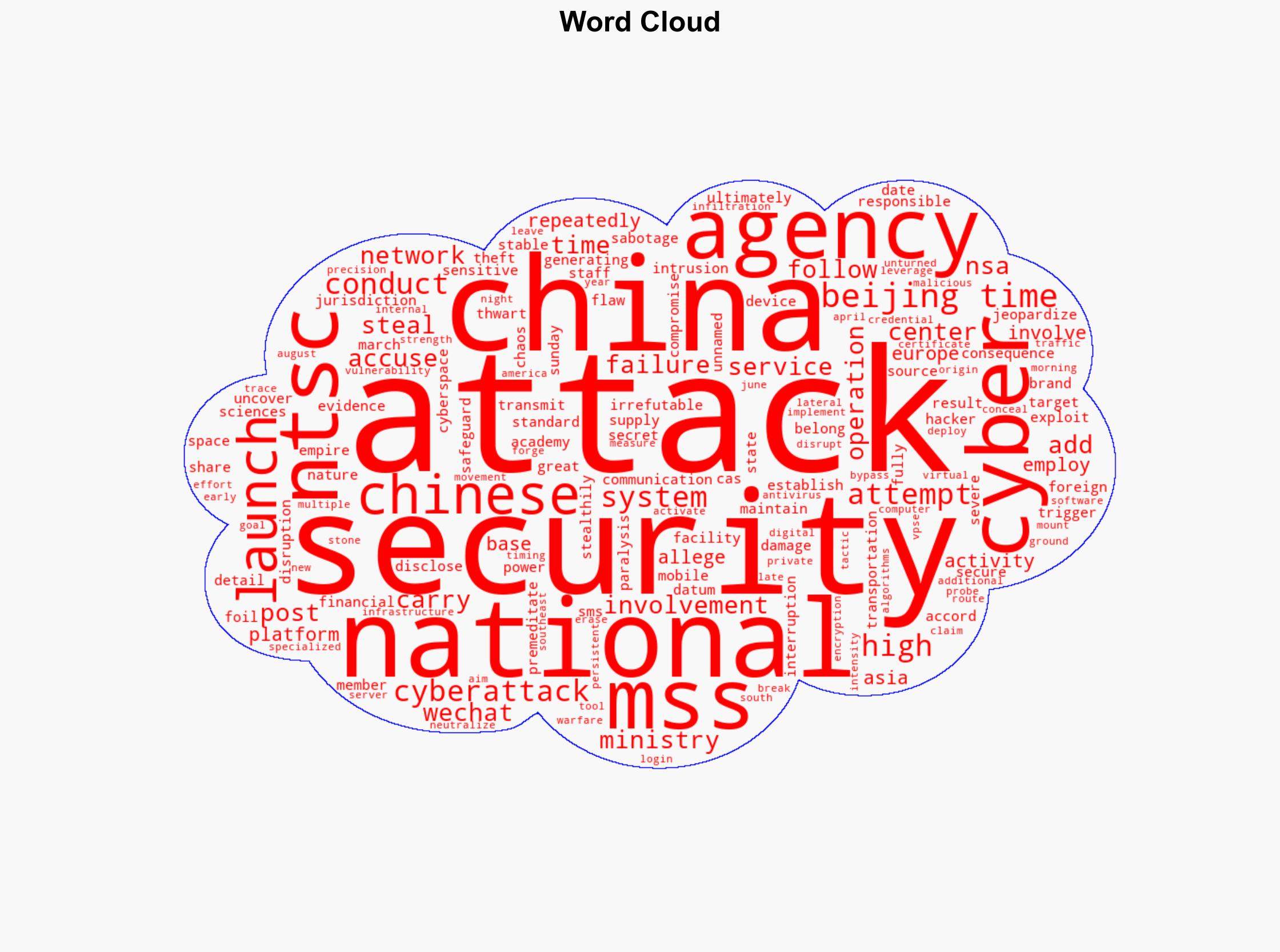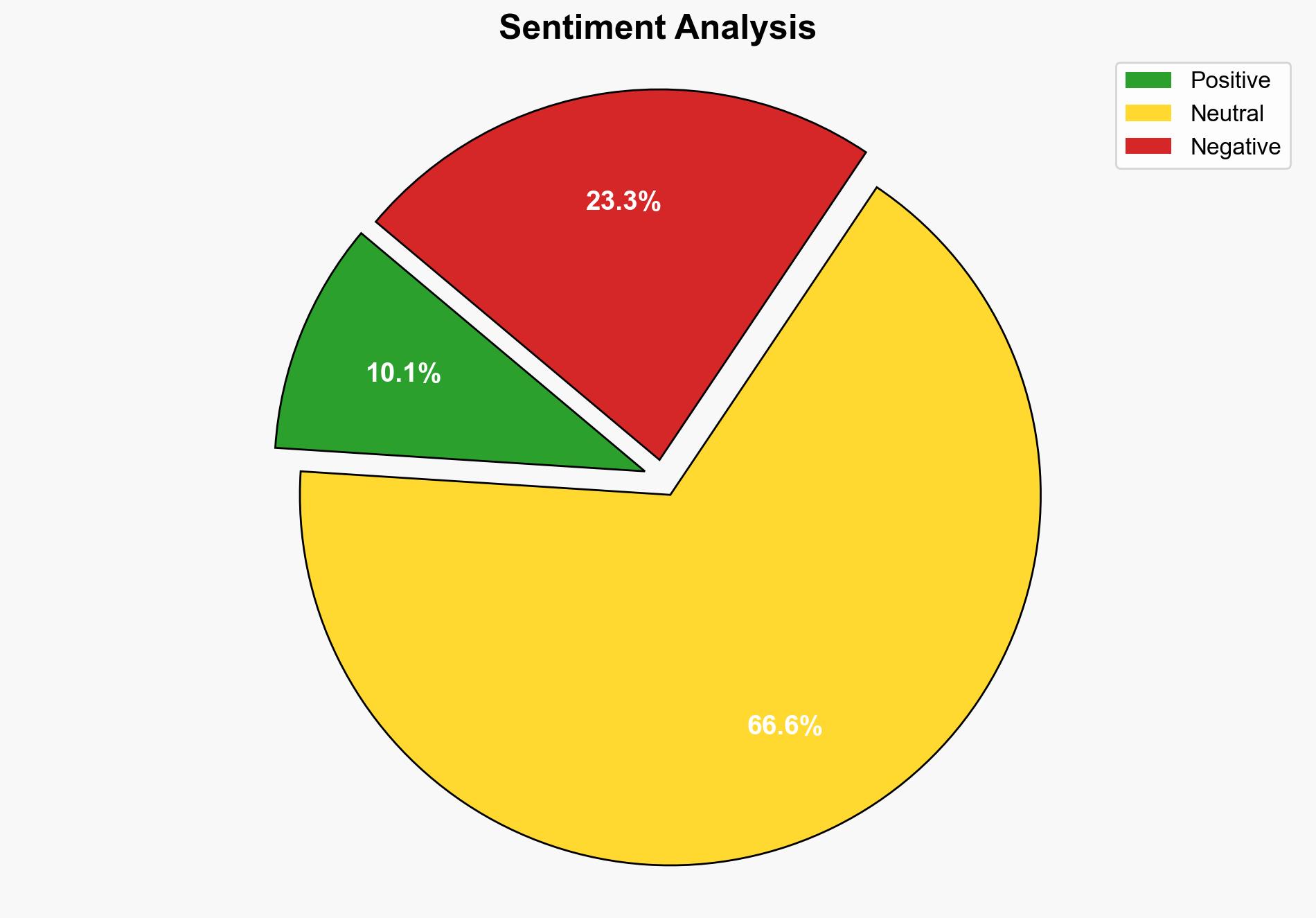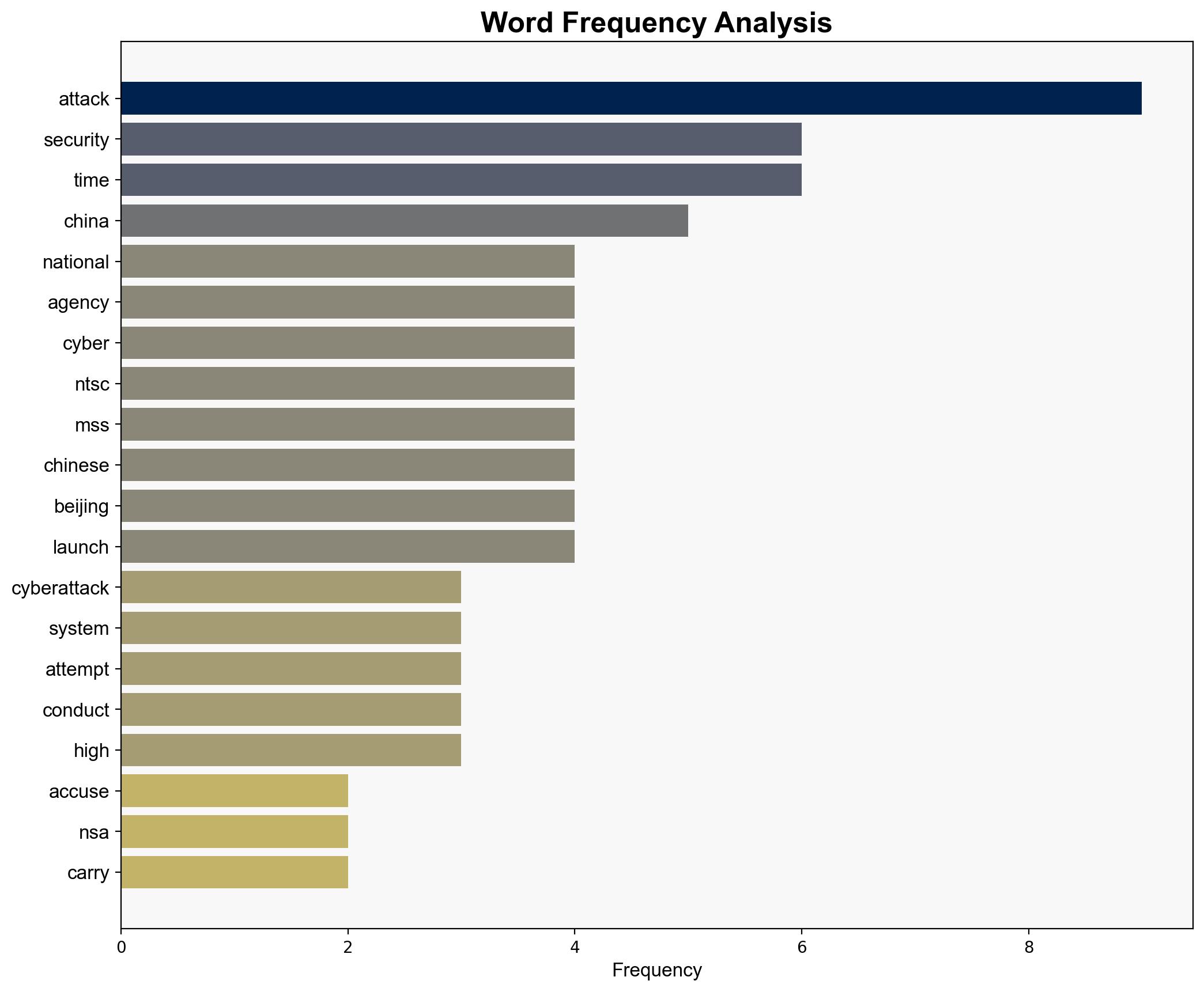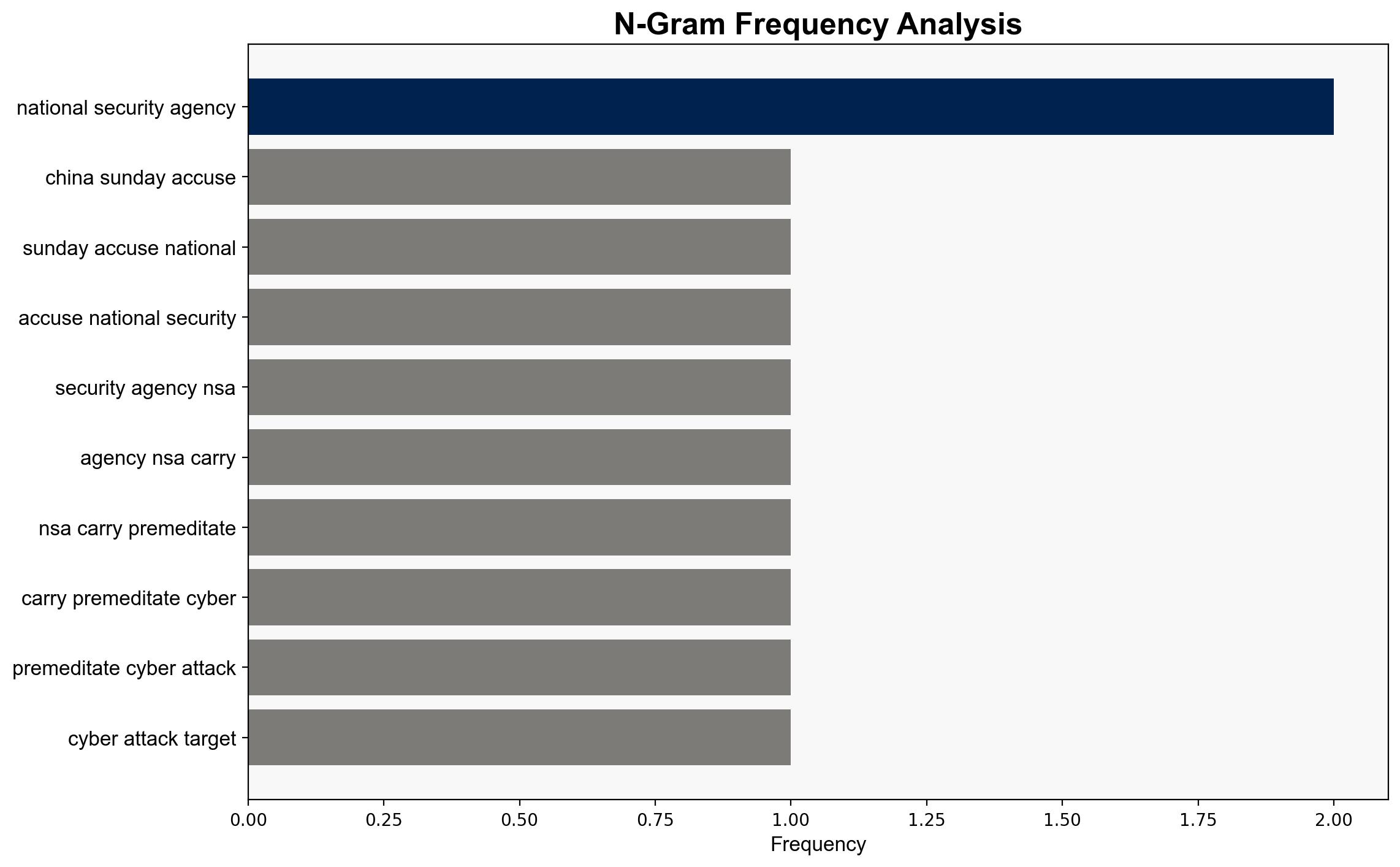MSS Claims NSA Used 42 Cyber Tools in Multi-Stage Attack on Beijing Time Systems – Internet
Published on: 2025-10-20
Intelligence Report: MSS Claims NSA Used 42 Cyber Tools in Multi-Stage Attack on Beijing Time Systems – Internet
1. BLUF (Bottom Line Up Front)
The most supported hypothesis is that the Ministry of State Security (MSS) is using allegations of a National Security Agency (NSA) cyberattack as a strategic narrative to bolster domestic cybersecurity initiatives and justify increased cyber defenses. Confidence level: Moderate. Recommended action: Enhance monitoring of Chinese cybersecurity policy shifts and public communications to anticipate potential retaliatory measures or policy changes.
2. Competing Hypotheses
1. **Hypothesis A**: The NSA conducted a sophisticated cyberattack on the Beijing Time Systems as alleged by the MSS, using advanced cyber tools to compromise critical infrastructure.
2. **Hypothesis B**: The MSS is leveraging unsubstantiated claims of an NSA cyberattack to justify internal cybersecurity measures and to deflect from domestic cyber vulnerabilities.
Using the Analysis of Competing Hypotheses (ACH) 2.0, Hypothesis B is better supported due to the lack of concrete evidence provided by the MSS and the timing of the allegations, which coincide with increased international scrutiny of China’s cyber activities.
3. Key Assumptions and Red Flags
– **Assumptions**: Hypothesis A assumes the MSS has credible evidence of NSA involvement. Hypothesis B assumes the MSS is motivated by internal policy goals rather than factual evidence.
– **Red Flags**: The MSS’s reliance on WeChat for dissemination and the absence of detailed technical evidence are potential indicators of narrative shaping rather than factual reporting.
– **Inconsistent Data**: The lack of specific details about the alleged cyber tools and the absence of corroborating evidence from independent sources.
4. Implications and Strategic Risks
– **Economic Risks**: Potential disruption of international business operations reliant on Beijing Time Systems.
– **Cyber Risks**: Escalation of cyber tensions between the U.S. and China, leading to increased cyber warfare activities.
– **Geopolitical Risks**: Strained diplomatic relations and potential retaliatory measures by China against perceived U.S. cyber aggression.
– **Psychological Risks**: Domestic narrative control by the Chinese government to reinforce public perception of external threats.
5. Recommendations and Outlook
- Enhance intelligence collection on Chinese cybersecurity policy changes and public communications.
- Prepare for potential retaliatory cyber measures from China by strengthening U.S. cyber defenses.
- Scenario Projections:
- Best Case: De-escalation through diplomatic engagement and transparency measures.
- Worst Case: Escalation into a broader cyber conflict impacting global infrastructure.
- Most Likely: Continued narrative posturing by China with limited direct cyber actions.
6. Key Individuals and Entities
– Ministry of State Security (MSS)
– National Security Agency (NSA)
– Chinese Academy of Sciences (CAS)
– National Time Service Center (NTSC)
7. Thematic Tags
national security threats, cybersecurity, counter-terrorism, regional focus




